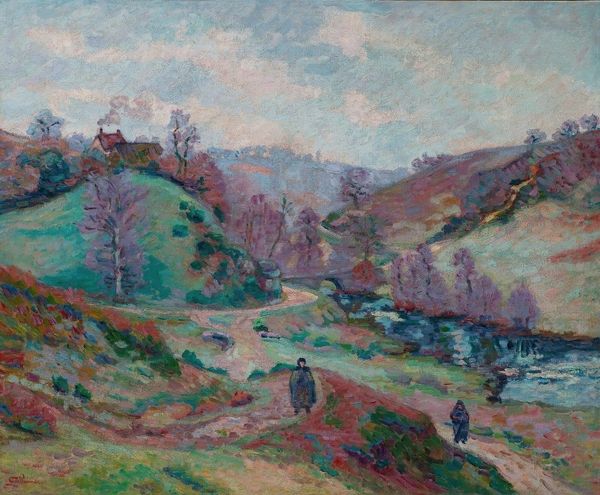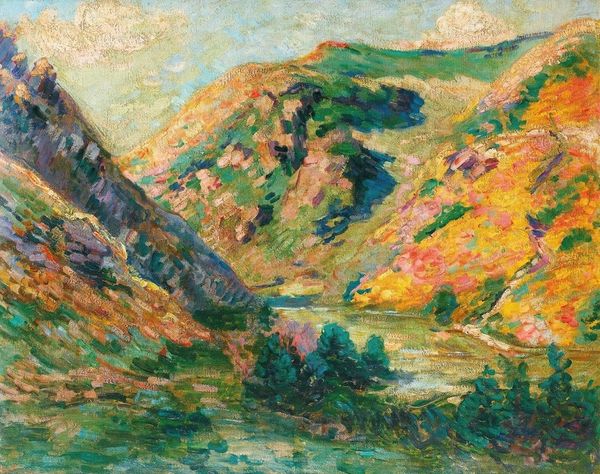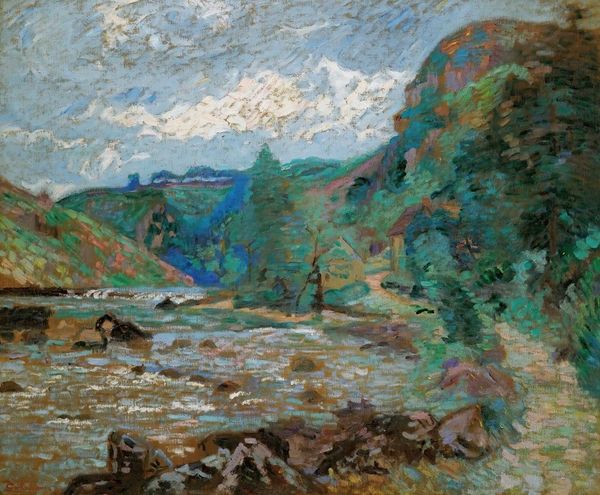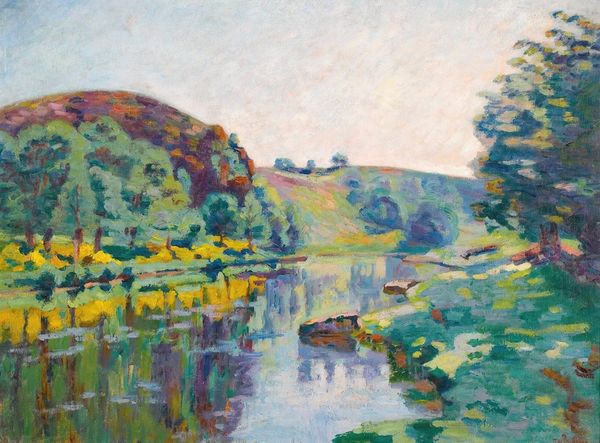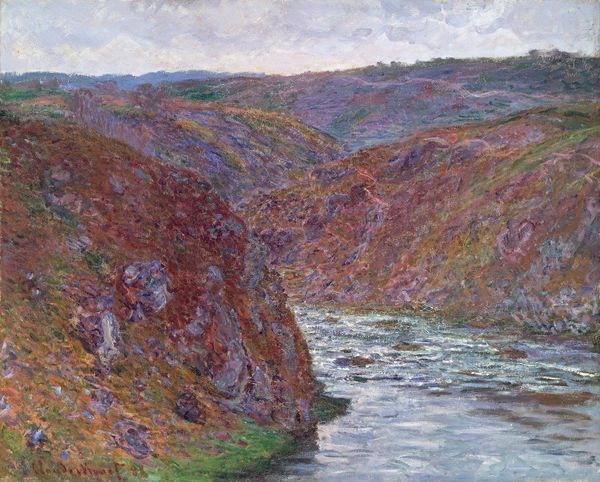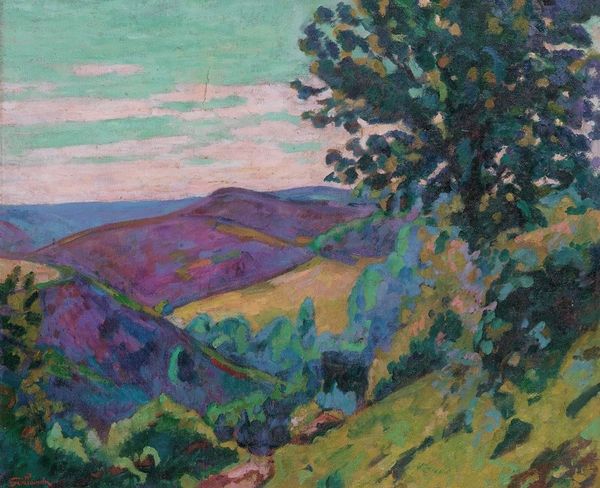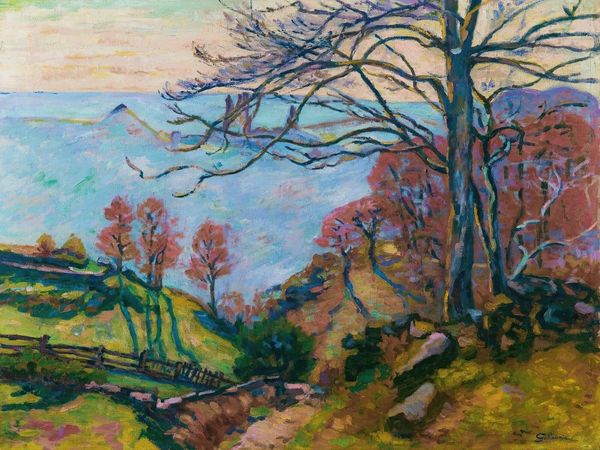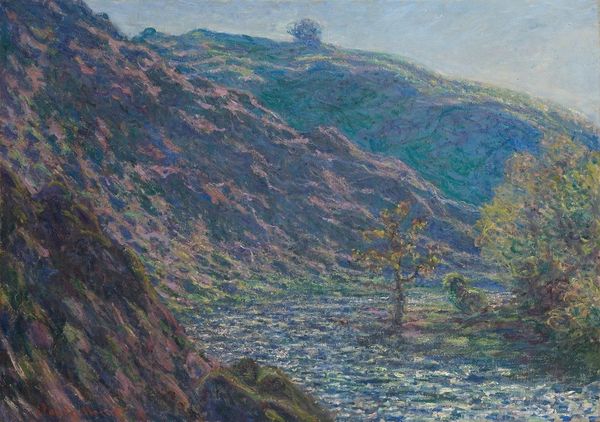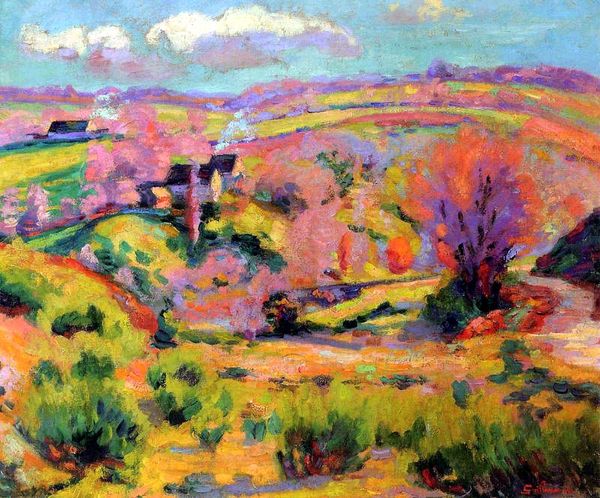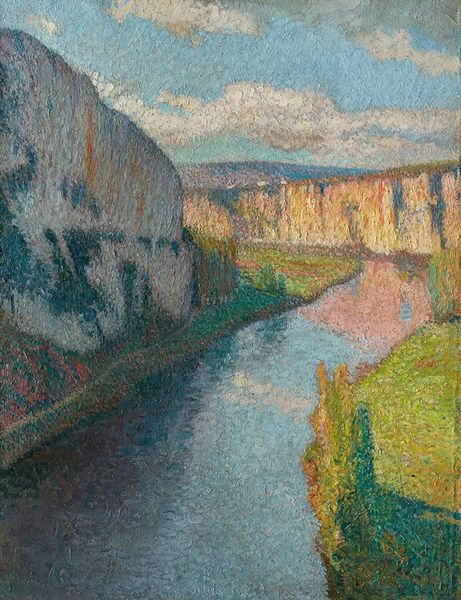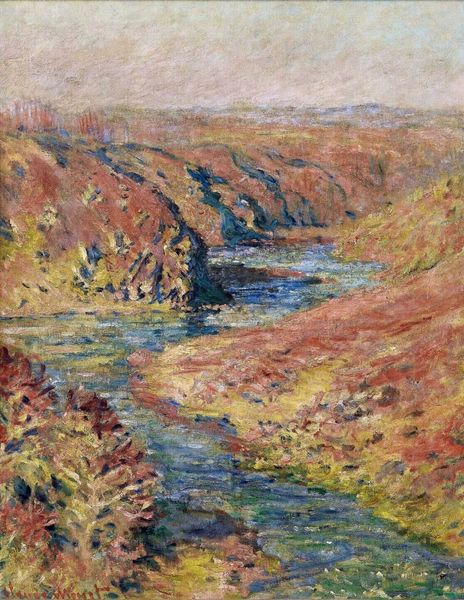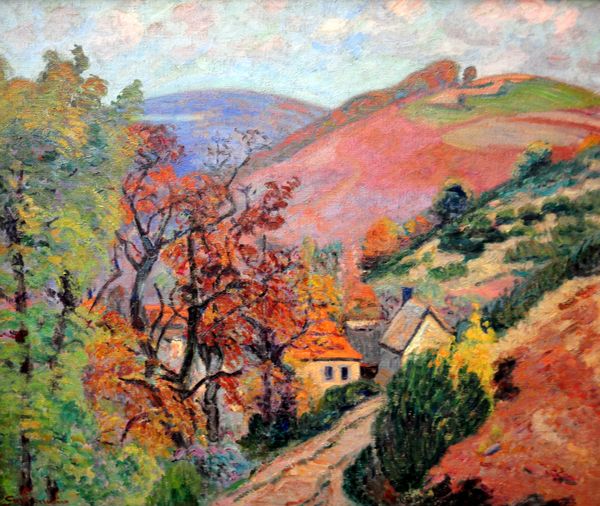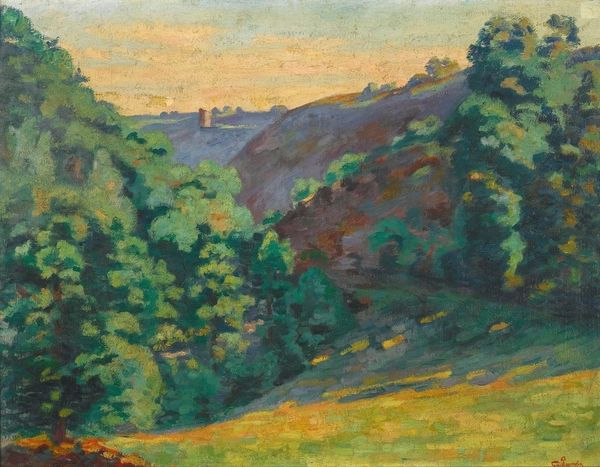
Copyright: Public Domain: Artvee
Curator: Armand Guillaumin's "Crozant, la folie, le soir," painted in 1910, offers a fascinating glimpse into the twilight hours of the French countryside. Editor: It strikes me immediately as melancholic, perhaps a commentary on the fleeting beauty found in rural life—those soft pinks washing over the scene feel like a fading memory. Curator: Note how the artist juxtaposes the vibrant orange of the setting sun on the left hillside with those gentle mauves. The brushstrokes, dabbed and thick, build a tactile surface alive with texture. He certainly seems to be drawing inspiration from Impressionist techniques, but stretching them with bold Fauvist color choices. Editor: That pink—almost aggressively feminine—dominates the palette, pushing back against what might be a traditionally masculine portrayal of landscape. Consider the role of women in the Impressionist movement and how their perspectives often reframed idealized visions of "nature." Was Guillaumin similarly attempting to destabilize a perceived gender binary? Curator: Or, could it be more of an optical analysis? By employing the violet tints and color relations in such a sophisticated manner, it could simply signal an exercise of the artist's mastery over capturing natural light as he understands it based on earlier optical experiments with painters like Monet and Pissarro. Editor: Yet we can’t separate such techniques from their broader cultural implications, can we? Even light takes on different meaning when filtered through the lens of power, or when applied by certain hands. Are the peasant inhabitants even represented here? Where are they in relation to this solitary dwelling with rising smoke? Their absence resonates as another, quiet statement, echoing historical marginalization of the rural workforce. Curator: True, but don't you think emphasizing only social absences potentially misses what *is* represented? Take the active current in the river at center. The application of layered paint—cool blues next to violet, even warm yellows—presents an exquisite passage when considered alongside the building, or what appears to be, crumbling architecture next to a lone residence in the middle ground. Editor: Alright, I see the tension you point to. These details indeed highlight the uneasy co-existence of decay alongside pastoral charm. In the end, I think it offers a potent vision of France at the turn of the century: the tensions, elisions and transformations it was facing. Curator: Ultimately, this piece remains intriguing for exactly such multi-layered and irresolvable readings. Editor: I concur. The evening holds more questions than answers, then.
Comments
No comments
Be the first to comment and join the conversation on the ultimate creative platform.

